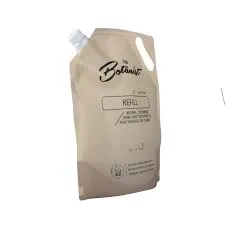- Afrikaans
- Albanian
- Amharic
- Arabic
- Armenian
- Azerbaijani
- Basque
- Belarusian
- Bengali
- Bosnian
- Bulgarian
- Catalan
- Cebuano
- chinese_simplified
- chinese_traditional
- Corsican
- Croatian
- Czech
- Danish
- Dutch
- English
- Esperanto
- Estonian
- Finnish
- French
- Frisian
- Galician
- Georgian
- German
- Greek
- Gujarati
- haitian_creole
- hausa
- hawaiian
- Hebrew
- Hindi
- Miao
- Hungarian
- Icelandic
- igbo
- Indonesian
- irish
- Italian
- Japanese
- Javanese
- Kannada
- kazakh
- Khmer
- Rwandese
- Korean
- Kurdish
- Kyrgyz
- Lao
- Latin
- Latvian
- Lithuanian
- Luxembourgish
- Macedonian
- Malgashi
- Malay
- Malayalam
- Maltese
- Maori
- Marathi
- Mongolian
- Myanmar
- Nepali
- Norwegian
- Norwegian
- Occitan
- Pashto
- Persian
- Polish
- Portuguese
- Punjabi
- Romanian
- Russian
- Samoan
- scottish-gaelic
- Serbian
- Sesotho
- Shona
- Sindhi
- Sinhala
- Slovak
- Slovenian
- Somali
- Spanish
- Sundanese
- Swahili
- Swedish
- Tagalog
- Tajik
- Tamil
- Tatar
- Telugu
- Thai
- Turkish
- Turkmen
- Ukrainian
- Urdu
- Uighur
- Uzbek
- Vietnamese
- Welsh
- Bantu
- Yiddish
- Yoruba
- Zulu
packaging design food
The Art and Importance of Packaging Design in the Food Industry
In today's competitive marketplace, packaging design plays an essential role in the food industry. It serves as the first point of contact between the product and the consumer, making it a critical element that can influence purchasing decisions and brand perception. With an increasing assortment of food products available, effective packaging design is vital for attracting attention, conveying information, and ultimately encouraging sales.
The Art and Importance of Packaging Design in the Food Industry
Beyond aesthetics, packaging also serves a functional purpose—protecting the food inside. The materials used for packaging must ensure that the product remains fresh, safe, and uncontaminated. Advances in technology have led to the development of various materials that extend shelf life, such as vacuum-sealed pouches and resealable bags. These innovations not only enhance the consumer experience but also help reduce food waste, which is increasingly important in today's environmentally conscious market.
packaging design food

Moreover, packaging design is instrumental in communicating vital information to consumers. Nutrition labels, ingredient lists, and allergen warnings must be clearly visible and easy to understand. Good packaging design balances information and aesthetics; it should provide essential details without overwhelming the consumer. For example, brands often employ infographics or icons to make nutritional information more digestible, helping consumers make informed choices quickly.
Brand identity is another crucial aspect of packaging design. Consistent and recognizable packaging can foster brand loyalty and trust. Consider iconic brands like Coca-Cola or Kellogg’s; their packaging is immediately recognizable and evokes specific associations. A coherent packaging strategy enhances a brand's image and solidifies its position in the market. Companies invest significantly in research and development to ensure that their packaging reflects their values and resonates with their target audience.
Sustainability is becoming increasingly important in packaging design within the food industry. With growing concerns about plastic waste and environmental impact, many companies are now prioritizing eco-friendly materials and practices. Biodegradable packaging, compostable materials, and minimalistic designs that reduce waste are trending as consumers demand greener alternatives. Brands that adopt sustainable packaging not only meet regulatory pressures but also cater to a shifting consumer mindset that values environmental responsibility.
In conclusion, packaging design in the food industry encompasses a multitude of functions and carries significant weight in consumer decision-making. It is not just a protective covering; it is a crucial marketing tool that conveys brand identity, communicates important information, and appeals to the senses. As the industry continues to evolve, embracing sustainability and innovative design will be critical for brands aiming to remain competitive. Ultimately, effective packaging design enhances the overall consumer experience, ensuring that products not only capture attention on the shelf but also nurture a deeper connection with consumers. The art of packaging design will undoubtedly continue to flourish, shaping the future of how we interact with food products.













